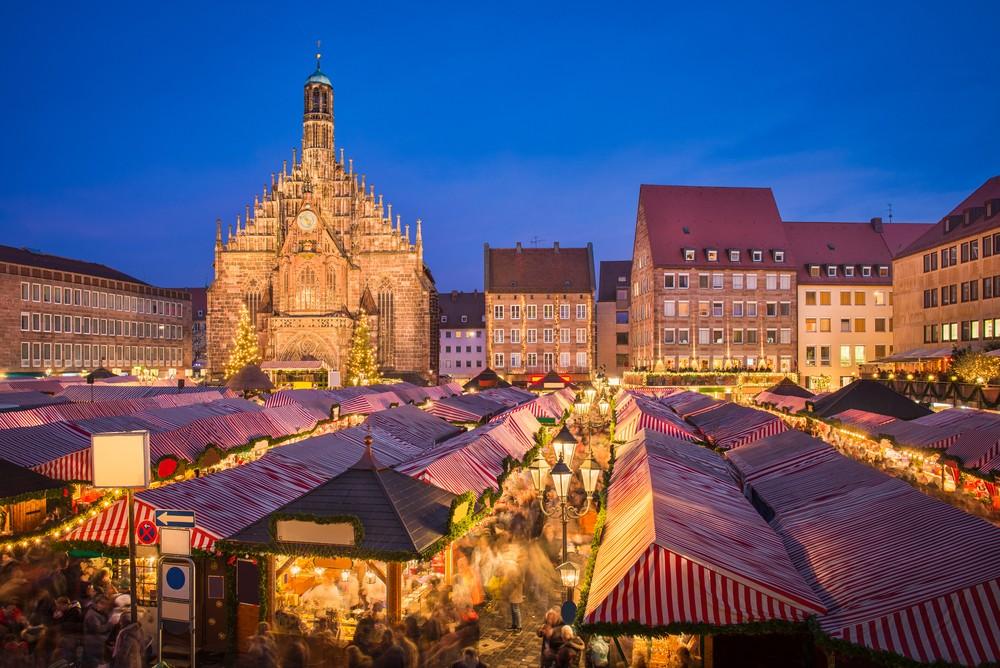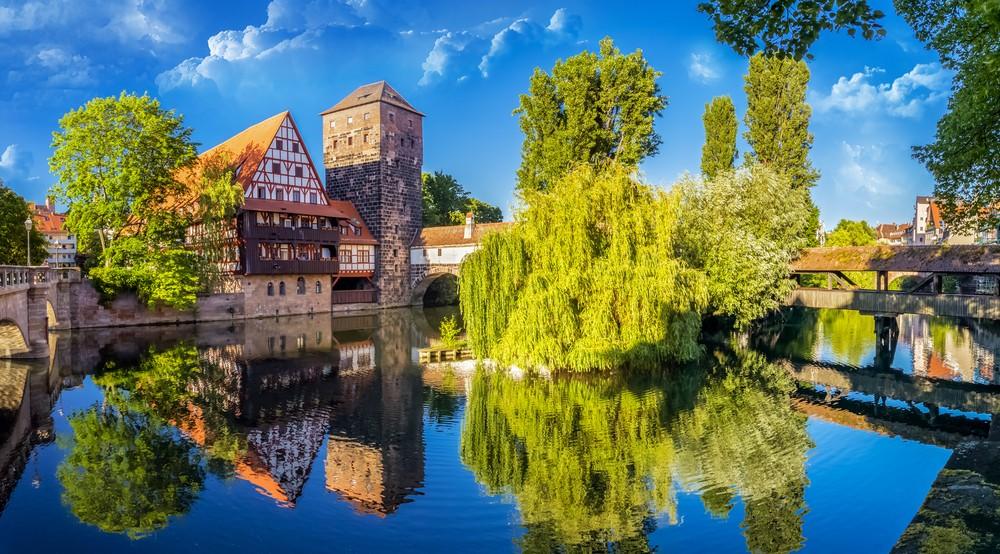The city of the Meistersinger and Hans Sachs, the city of Albrecht Dürer, the first German railway and the inventor of the pocket watch Peter Henlein is not a city of slug window romanticism. The destruction in the Second World War has taken away all illusions in this respect. However – a big compliment to the Nuremberg city fathers: They resisted the temptation to build a concrete city on the ruins of the old town. Architects and craftsmen carefully resurrected the historic core city. As if in magic, they restored imaginatively and skillfully. The choirs and oriels have been adapted to the medieval heritage. The historic old town determines the image of the Franconian metropolis in a wonderful way. Nuremberg is cozy, traditional, hospitable, interesting, original and dynamic.
In the heart of the city of Nuremberg
How strongly one is connected to Nuremberg’s city history is shown by the popular Old Town walks of the Nuremberg “Association of Friends of the Old Town”. The city can also be discovered unaccompanied. The starting point could be the main market. Here, the column of the oldest fountain in the city protrudes like a Gothic church spire. In the background, the towers of St. Sebaldus’ Church appear. The spacious square offers visitors from all over the world enough space for a magnificent view up to the mighty “Nourenberg”.
Meanwhile, the half-timbering of respectable citizens impresses and a turret contemplatively adorns the Pilatus House. Right across the street is the house of Nuremberg’s most famous man: Albrecht Dürer. On the approximately three-hour circular route, visitors enjoy a magical flair. Similar to a journey through time, they encounter countless locations. The town hall with hole prisons invites you to take an exciting tour. The 14th-century dungeons are in their original state and house torture chambers and a blacksmith’s workshop. The “Fränkische Weinstube” in the Handwerkerhof invites you to stop for a bite to eat.
The farm is located in the middle of the city, framed by the towers and walls of the five-kilometre-long city fortifications. Small, delightful half-timbered houses adorn this mini-city. Here you can look over the shoulders of the craftsmen and buy beautiful products. If you don’t shy away from the ascent to the Kaiserburg after all these impressions, you will be rewarded with a beautiful view over the city.
All kinds of interesting facts about the “treasure chest of the empire”
The crowning landmark of the old town is the Imperial Castle, which towers over the city on a mighty sandstone rock. 32 German emperors and kings have written German history from here. The Imperial Castle is one of the most important castle complexes in Central Europe. Particularly interesting are the romantic castle chapel, the knights’ and emperor’s hall as well as the Sinwell Tower. Discovering historic Nuremberg is easy. Visitors can reach countless art treasures and monuments on short distances. The three largest medieval churches are located directly at the foot of the Imperial Castle. In the middle of the closed half-timbered building at Tiergärtner Tor is Albrecht Dürer’s residence. He bought it in 1509 and lived in it until his death in 1528. A museum documents his life and work. After a stroll through history, a visit to the toy museum is recommended.
Where children’s dreams come true, well-known traditional companies have their headquarters today. For over 30 years, the Toy Museum has been captivating young and old. The “Nuremberg trinkets” have a tradition. No less famous is the Nuremberg Christmas Market. Who will leave Nuremberg without having nibbled on the historic gingerbread or tasted the Nuremberg bratwurst?
Not to forget, the lyre of the Frauenkirche. The carillon of Nuremberg’s Frauenkirche on the market square is something special: at 12 noon sharp, the 7 electors step out of the gable wall and pay homage to the emperor. This was once stipulated by Charles IV in his imperial constitution.
Tip: The castle district of Nuremberg is also lively at night and invites you to varied moments with a variety of pubs, culinary meetings and cabaret stages.

Nuremberg, the city of museums and important personalities
As in only a few other major German cities, a large number of museums are concentrated on the Pegnitz, some of them of extraordinary importance. The Germanisches Nationalmuseum inspires with 1.2 million cultural-historical objects. The Kunsthalle Nürnberg presents impressive contemporary art and the Stadtmuseum Fembohaus invites you to 950 years of city history.
Not to forget the numerous personalities who made history in Nuremberg. In addition to Albrecht Dürer: Martin Behaim (1459-1507) – builder of the first globe, Adam Kraft (1455-1508) – sculptor, Hans Sachs (1494-1576) – poet and master singer and Peter Henlein (1480-15429) – inventor of the pocket watch. Nuremberg is a true “treasure chest”.


